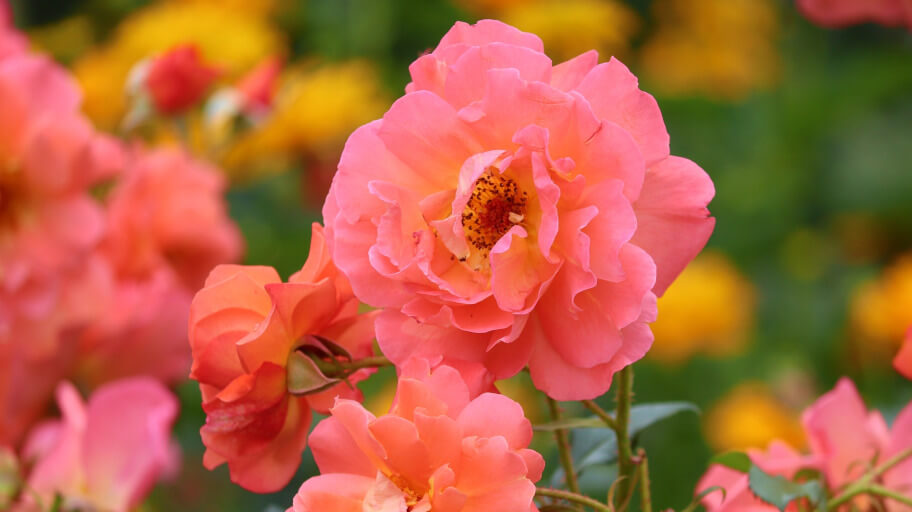
Nectarines are a delicious fruit that is enjoyed by so many people. If you grow a nectarine tree in your garden in Australia, whether a dwarf or a regular-sized one, you’ll want to ensure that your tree yields plump fruit during harvest time. However, to do so, you’ll need to prune this deciduous tree and doing so is not as difficult as it may appear at first.
Why it’s important to do it? Well, pruning is essential for several reasons. It helps with the tree’s survival, its stimulation as well as shaping. Here, you will find a handy, step-by-step guide to teach you how to do this. You’ll learn when to prune nectarine trees and how to prune them correctly, as well.
When to prune nectarine trees?
The first things you need to consider is when to prune your nectarine tree. There are two main periods for doing this, regardless of which one you choose, keep in mind that it’s good to prune your tree every year.
- Winter – During this season the tree is dormant. Pruning in winter will encourage fruit and tree growth in the spring months.
- Summer – The second favourable period when you should prune nectarine trees in Australia is during late summer. More precisely, after a harvest. This will encourage much-needed growth, as well.
How to prune your nectarine tree
Regular nectarine trees need pruning to have a strong branch structure that will help support fruit growth. It doesn’t matter whether you’re pruning a dwarf tree or a regular-sized tree, the steps below apply to both.
What you will need:
- Secateurs for twigs and small branches
- Pruning saw for larger branches (5-6 cm thick)
- Chainsaw for pruning stout branches
- Sharpening tools
- Wire
- Chlorine bleach and water
- Lime sulphur
- Latex paint
- A ladder
Disinfect your tools
Disinfect your gardening tools in one part chlorine bleach and nine parts water for about 30 minutes. This will help prevent the spread of pathogens and bacteria.
Cut the trunk
Cut the trunk to about 60-76 cm at the top of the tree’s structure. This will help stimulate lower branching and will distribute more evenly the water and nutrients between the root system and the branches.
Trim the bigger branches
Once you’ve trimmed down the trunk, you should cut all branches except the two highest branches, forming a V-shape. These are the main branches that grow out from the leader or the trunk. Use your pruning shears or secateurs for this purpose. Ultimately, this will allow more sunlight to enter the canopy of the tree.
Secure the highest branches
Use wire to create a Y-shape between the two highest scaffolding branches and the trunk to keep them stable. Make sure you don’t tighten the wire too much so that it stifles branch growth.
Each year, for the first three years, you need to cut the leader, or the trunk’s extension above the Y-shaped scaffolding branches at 45-degree angles by using your lopping shears. This will help encourage vegetative growth, thereby forcing the tree to distribute nutrients to its lower parts.
You’ll want to wait until January to cut back new branch growth. These are lateral branches that grow out of the scaffold branches. Prune these to the collar or base at 45-degree.
You’ll also want to encourage healthy growth after the first three years. To do so, cut branches which show signs of gumming at 45-degree angles. This is hardened sap that oozes from lesions on the tree and is an early indication of disease.
Cut down the smaller branches
When the canopy and the branches have been taken care of, look to cut suckers that grow near the bottom of the trunk. Suckers are small branches which form under the central branch system of the tree. These should be cut back to the branch collar at a 45-degree angle as they can prevent the nectarine tree from fruiting.
Take care of any branches that bend downwards. They should be pruned back to the point at which they tend to go downwards in order to encourage horizontal growth. The purpose of pruning these branches is to improve fruit production, as downward-sloping branches will subsequently produce less fruit and will become less vigorous over time.
When it comes to branches that have buds or a cluster of buds on them, it’s important to remember that groups of two or three buds will result in fruit, whereas clusters of one bud will result in leaves and a new branch. To yield more fruit, cut just above the cluster at a 45-degree angle. To reduce vegetative and branch growth, cut just above the single bud also at a 45-degree angle.
Protect your nectarine tree
Add latex paint to the leader or trunk. Do so after each pruning throughout the year as this will help protect it from insects and disease.
Takeaways:
- Make sure you sterilise all your tools and equipment before you start pruning.
- When starting, create a Y-shape with two scaffolding branches and the trunk.
- Ensure there is enough sunlight entering the canopy of the tree for vegetative and fruit growth.
- Prune horizontal branches and those that tend to slope downwards
- Cut back suckers that grow out from the root system to prevent them from absorbing nutrients and water.
- Prune your nectarine tree after a harvest in summer or when they are dormant in winter.
- Pruning should be done every year.
- Add paint latex to the trunk to prevent any disease and infection.
Tree pruning seems like too much work?
A reliable Fantastic gardener can take care of your trees!








